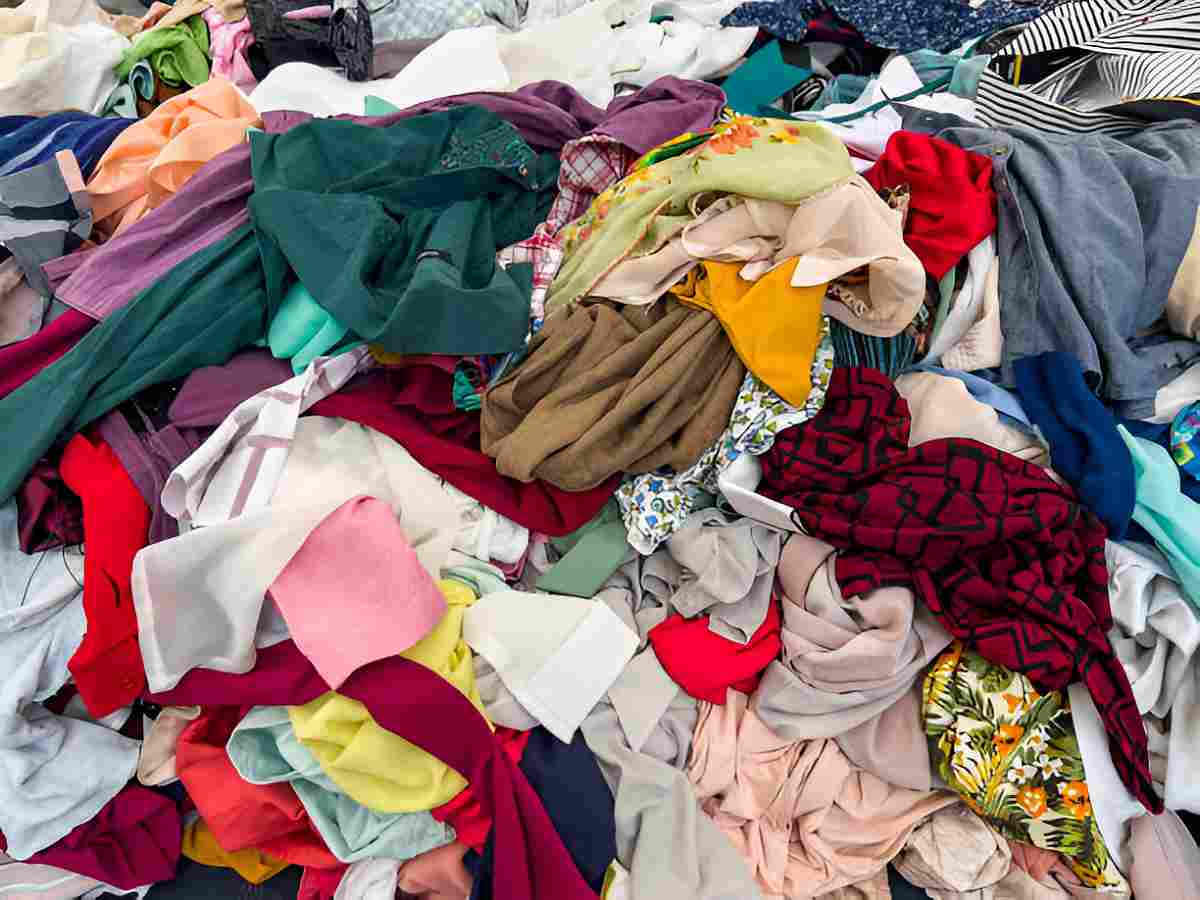Fast fashion has become an inherent part of today’s consumer culture, driving trends at an incredible pace and making stylish clothing more accessible than ever before. However, this convenience comes with significant downsides that warrant discussions on environmental, social, and economic facets.
The Environmental Impact of Fast Fashion
The fast fashion industry is notorious for its detrimental effects on the environment. Manufacturers often prioritize speed over sustainability, leading to massive textile waste. It is estimated that over 92 million tons of waste are produced annually by the global fashion industry.
Fast fashion relies heavily on synthetic materials, which are not biodegradable. Instead of natural fibers, brands often favor polyester and nylon, resulting in pollution from microplastics entering water streams and oceans.
Moreover, the water consumption linked to fast fashion is staggering. Producing just one cotton t-shirt requires approximately 2,700 liters of water, enough for one person to drink for three years. This rampant consumption depletes water resources and exacerbates local water scarcity issues.
Understanding the Supply Chain: How Fast Fashion Works
Fast fashion operates on a unique supply chain model designed for efficiency. The process begins with trend forecasting – spotting what is ‘in’ before it becomes mainstream. This is followed by rapid production, where designs are quickly turned into products, often in countries with lower labor costs.
Manufacturers source materials, produce garments, and send them to retail stores in a matter of weeks. This quick turnaround is achieved through a network of factories, often located in developing countries, which can produce large quantities of clothing at breakneck speed.
This model reduces costs significantly but raises ethical questions about labor practices and working conditions in manufacturing facilities. Workers are often subjected to long hours, low wages, and unsafe working environments.
The Social Consequences of Fast Fashion on Workers
The workers behind fast fashion endure repercussions that stem from the industry’s pressures. Many factories operate under poor conditions, where labor laws and safety regulations are frequently overlooked. As a result, workers, primarily women, often work in hazardous environments.
Wage disparity is another pressing issue. Many workers receive less than a living wage, struggling to support their families while corporations reap massive profits. Additionally, the relentless pace at which these fast fashion brands release new apparel leads to excessive overtime, impacting workers’ physical and mental health.
Moreover, the lack of job security in fast fashion industries means that workers often live in a constant state of anxiety regarding their employment status, further perpetuating a cycle of poverty and instability.
Sustainable Alternatives: Moving Beyond Fast Fashion
In response to the growing concerns surrounding Affordable fashion, sustainable alternatives are emerging as viable options for conscientious consumers. Brands promoting slow fashion prioritize craftsmanship, quality, and ethical manufacturing processes.
Some sustainable brands utilize organic materials and fair trade practices, ensuring that their production processes are environmentally friendly and equitable. Furthermore, many companies are now adopting circular economy principles, encouraging consumers to recycle or upcycle their clothing.
Local thrift shops and online resale platforms also offer consumers a chance to shop sustainably while minimizing waste. This shift moves away from the throwaway culture and towards a more thoughtful approach to fashion consumption.
The Role of Consumer Behavior in Fast Fashion Trends
Consumer behavior plays a crucial role in driving the fast fashion trend. With the influence of social media, trends can spread like wildfire, prompting people to purchase new clothing more frequently than ever before. The desire to keep up with influencers or trending hashtags often leads to impulsive buying practices.
Understanding this behavior is key to addressing issues surrounding fast fashion. Education about the environmental and social implications of these quick purchases can empower consumers to make more informed choices.
By promoting a culture of mindfulness in shopping, consumers can shift their focus from quantity to quality, thereby reducing the demand for fast fashion products.
Fast Fashion vs
Fast fashion presents a stark contrast to traditional retailing models. While conventional fashion emphasizes seasonal collections and investment in timeless pieces, fast fashion caters to immediate gratification, leading to a high turnover of styles.
This comparison underscores the broader debate on styles, where some advocate for responsible consumerism while others revel in the euphoria of new, affordable trends. Understanding the implications of this behavior is crucial for cultivating a more responsible fashion outlook.
The Influence of Social Media on Fast Fashion Consumption
The rise of social media has transformed the fashion landscape. Platforms like Instagram and TikTok allow brands to showcase their collections and reach a global audience almost instantaneously. This rapid dissemination of information fosters a culture of trend-chasing among consumers.
Influencers and celebrities regularly endorse particular styles, significantly impacting consumer purchasing decisions. This trend can lead to what some term “social media syndrome,” where users feel pressured to constantly update their wardrobe to fit in with current aesthetics.
As a result, understanding the influence of social media on fast fashion consumption has become increasingly crucial, as it reflects broader societal values and priorities.
The Economic Implications of the Fast Fashion Industry
The economic landscape is significantly affected by the fast fashion sector. The industry generates significant revenue and economic growth in many developing nations, providing jobs where few options may exist.
However, this growth often comes at a price. The emphasis on low-cost production can undermine local economies and lead to exploitation, with profits concentrated in the hands of a few large corporations.
Additionally, the environmental degradation resulting from fast fashion can impose long-term economic costs on societies, from increased healthcare costs due to pollution to the financial burden of cleaning up waste.
How to Build a Capsule Wardrobe: A Step Towards Sustainability
Building a capsule wardrobe is an excellent way to embrace sustainability while still enjoying fashion. A capsule wardrobe consists of a limited number of versatile pieces that can be mixed and matched for various outfits.
- Assess your style: Understanding what styles suit you best is vital to curating a wardrobe you love.
- Choose quality over quantity: Invest in timeless, high-quality pieces that will last.
- Limit your colors: Stick to a cohesive color palette to make it easier to combine pieces.
- Focus on essentials: Include basic garments that can serve multiple functions.
This strategy not only promotes sustainability but also simplifies daily outfit choices, reducing decision fatigue and enhancing personal style.
The Future of Fashion: Innovations and Trends in Ethical Clothing
The future of fashion is leaning increasingly towards ethical innovation. Designers are exploring sustainable materials like mushroom leather and organic cotton, which lessen environmental harm.
Moreover, technology and transparency are becoming paramount. Many brands are utilizing blockchain to ensure traceability in their supply chains, allowing consumers to see the journey of their garments.
The focus on conscious consumerism is likely to drive further innovation in ethical clothing, pushing the industry toward practices that prioritize both people and the planet.
What is fast fashion and why is it a problem?
Fast fashion refers to the rapid production of high volumes of inexpensive clothing, designed to replicate current fashion trends. It poses problems that affect the environment, workers, and local economies due to its unsustainable practices.
The sheer volume of clothing produced contributes to waste and pollution, while the treatment of workers raises serious ethical concerns. Recognizing these issues is the first step towards creating a more sustainable and equitable fashion landscape.
What are the biggest fast fashion brands?
The fast fashion industry is dominated by several colossal brands known for their fast-paced operations and accessibility to consumers. These include companies like Zara, H&M, Forever 21, and Shein, each known for their ability to cater to rapidly changing trends.
Critically, these brands play a significant role in shaping consumption patterns and influencing fashion standards worldwide. Their practices, however, raise questions about sustainability and ethical considerations that modern consumers must grapple with.
Who consumes the most fast fashion?
The primary consumers of fast fashion include young adults and teenagers, particularly those involved in social media communities that emphasize appearance and style. This demographic is highly influenced by online trends and social validation.
However, the reach of fast fashion extends beyond just the young. Women, in particular, make up a large portion of the consumer base, driven by the desire for variety and affordability in their wardrobe choices. Understanding this demographic can help brands align their practices with more sustainable consumption patterns.
Overall, the fast fashion industry presents a paradox of accessibility and responsibility, highlighting the need for critical evaluation of consumer behavior and industry practices.










